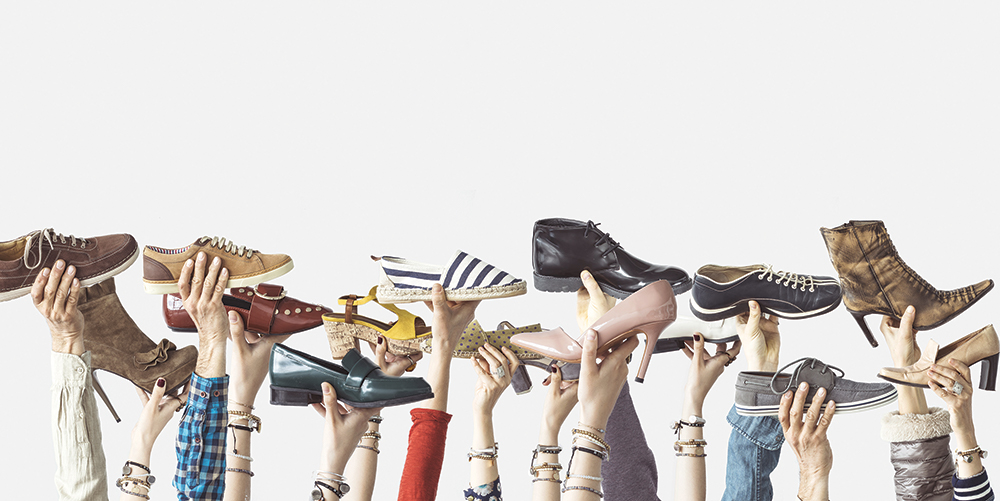Leonardo da Vinci said, “The human foot is a masterpiece of engineering and a work of art.” Unfortunately, many people are not taking very good care of their masterpieces, and most often, the problem can be traced back to shoes. There are several common shoe mistakes that you could be making that are hurting your feet! Take our quiz and explore those common shoe mistakes that can really do a number on your feet and protect your works of art—your feet!
1. True or false? Your feet can change length and width at just about any point in adulthood, so it’s important to have your feet measured at least once a year to ensure you are buying the right size shoes.
2. High heels are harmful to feet, causing plantar fasciitis, bunions, heel spurs, pain, numbness, and ankle injuries, and should be worn as little as possible. What’s the maximum heel height recommended by doctors?
- 3.5 inches
- 3 inches
- 2.25 inches
- 1 inch
3. Just like with any piece of clothing, different shoe styles and brands fit differently, meaning a variety of shoe sizes will “fit.” What should you look for when trying on new shoes?
- Room to wiggle your toes.
- A snug heel
- A non-rigid back
- All of the above
4. True or false? You should buy shoes with the intent that they will need to be “broken in” over time.
5. If you did an arch test by stepping onto a piece of cardboard with a wet foot to reveal your footprint, what are the different kinds of arches (the middle part of the foot) you might see?
- Normal arch: footprint with half of the middle point shown.
- Flat foot: entire footprint shows.
- High arch: no middle of the footprint.
- All of the above
6. True or false? All sneakers are made equal; a shoe sold for basketball players works just as well for a jogger or tennis player.
7. All shoes can become worn out over time, which can cause foot, hip, and back pain. When should you replace your shoes or, when possible, have them resoled?
- Every six months for shoes you wear daily, especially running shoes.
- Whenever you see the support getting low.
- Every two years, no matter what.
- Both A and B.
8. True or false? Wearing the same shoes every day is bad for your feet because it leads to foot fatigue because you’re constantly using the same areas of the foot for support and walking.
9. Constantly wearing shoes with poor arch support like flip-flops and ballet shoes can lead to what foot problems?
- Bunions
- Hammertoes
- Collapsed arch/ flat foot
- All of the above
10. True or false? Working out in bare feet is the best way to go.
Compiled by ERIKA ALDRICH / Information from WebMD and thehealthy.com.
ANSWERS:
- True. From weight gain/weight loss to falling arches, there are a number of reasons why your feet could change size. Have them measured at a shoe store at least once a year.
- C. 2.25 inches. Wearing high heels with heels higher than 2.25 inches can lead to foot damage.
- D. All of the above. Shoes should feel comfortable, have some wiggle room in the toe, and be snug without being tight or rigid.
- False. Shoes that need to get “broken in” in order to fit are too small.
- D. All of the above. Insole supports can help with both flat feet and high arches.
- False. You should buy shoes to match the daily activities you’re doing, whether it’s walking, running, playing tennis, hiking, or playing basketball.
- D. Both A and B. Shoes used daily, especially running shoes, should be replaced or resoled every six months or when you see wear and tear on the soles or heels, whichever comes first.
- True. Podiatrists recommend wearing different shoes on different days to avoid foot fatigue.
- D. All of the above. Minimize time spent walking in shoes with poor support.
- False. Going barefoot may be fine for yoga and pilates, but supporting your feet with appropriate footwear is important in all other workouts.
